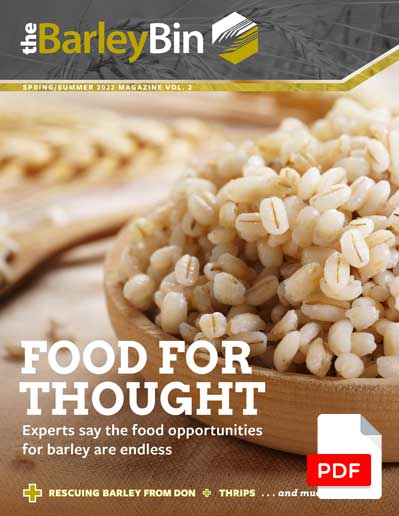The Barley Bin Magazine
Spring / Summer 2022
Welcome to the Barley Bin magazine, a new bi-annual SaskBarley publication, featuring insider industry information and the latest news on barley production and marketing.
COVER STORY
The Rise of Barley
Affordable, versatile and nutritious, this wholesome grain is ready for its big break.
As a food and ingredient for human consumption, barley has a lot going for it. It’s affordable, easy to cook with, versatile and very nutritious – in fact, it even has a health claim in Canada.
However, barley is not nearly as popular as other prairie grains, such as oats and wheat. But many people think that could – and should – change…


